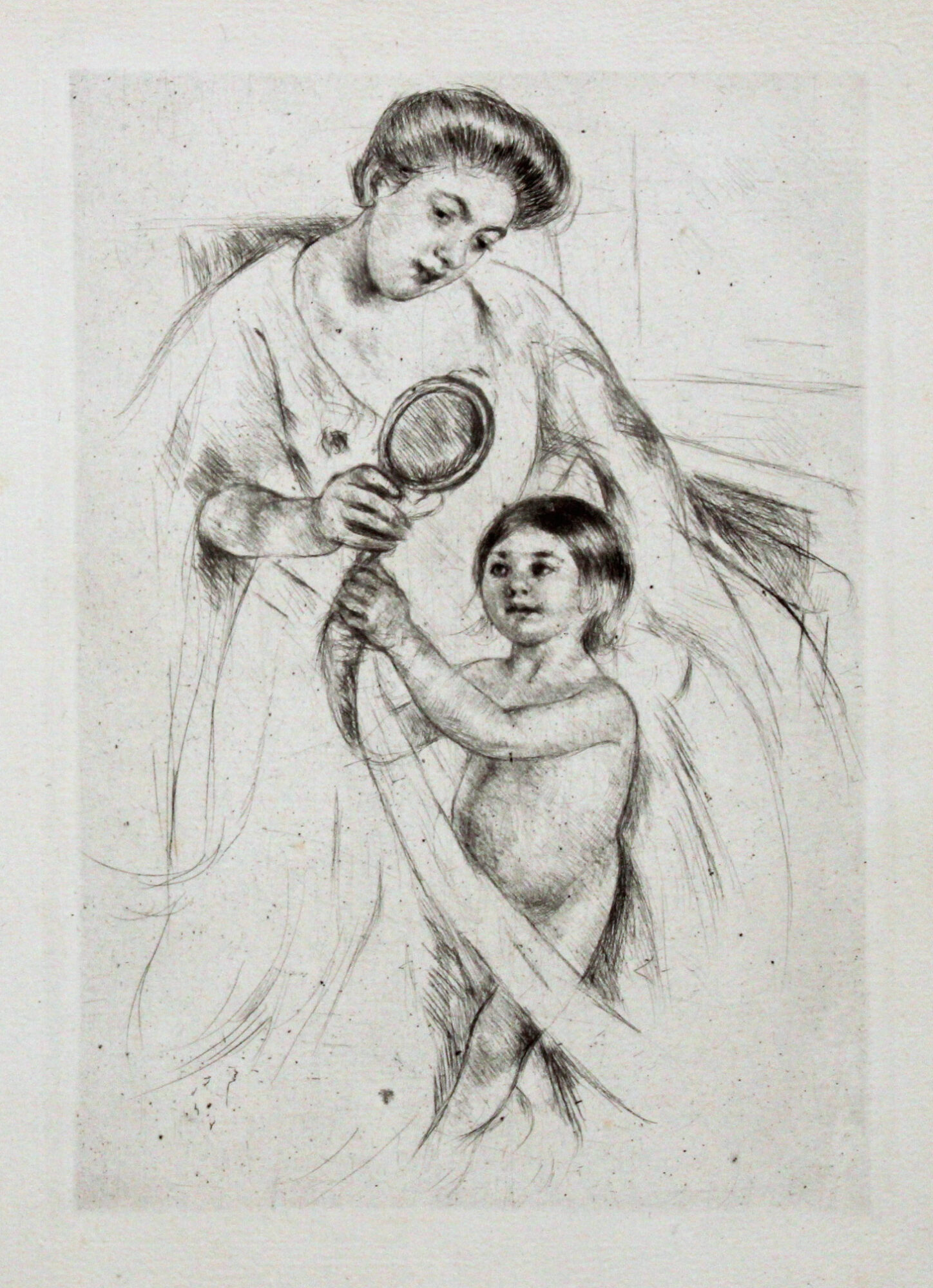Mary Cassatt, the daughter of a prominent businessman, was born in Pittsburgh, Pennsylvania in 1845. She was interested in art at an early age and was allowed to attend the Pennsylvania Academy of the Fine Arts in 1861. Following four years of study at the Academy, she was convinced that she would learn more in Europe from study of the Old Masters’ works. After some convincing, her parents allowed her to leave for Paris where she began studies with Charles Chaplin, Jean-Leon Gerome, Soyer and Couture.
Mary Cassatt, the daughter of a prominent businessman, was born in Pittsburgh, Pennsylvania in 1845. She was interested in art at an early age and was allowed to attend the Pennsylvania Academy of the Fine Arts in 1861. Following four years of study at the Academy, she was convinced that she would learn more in Europe from study of the Old Masters’ works. After some convincing, her parents allowed her to leave for Paris where she began studies with Charles Chaplin, Jean-Leon Gerome, Soyer and Couture.
In 1868 her painting, “The Mandolin” was accepted by the Paris Salon. Edgar Degas admired this painting and they were introduced. Through Degas, Cassatt became friends and associates of the Impressionist Group, including Camille Pissarro, Manet, and Renoir. She exhibited with them in 1877 and 1879 through 1881. She remained the only American to become a true member of this remarkable group of artists. Unlike her fellow Impressionists, she was primarily a figure painter; however she demonstrated the same qualities of color and light that made The Impressionists artwork so recognizable.
Though Cassatt never married, and did not have any children of her own, she consistently chose to paint mothers and their children, often using friends and family members as her subjects. Her choice of profession and marital status made her unconventional by Victorian standards, but her paintings, drypoint etchings and pastels reveal a belief in the sacredness of a mother’s love for her children and an appreciation of women’s traditional roles.
Cassatt was not only a remarkable artist, but she also had the insight to work diligently to encourage Americans, especially her influential friends the Havemeyers, to collect important paintings. She knew this would enrich the United States nascent public art museums.
Mary Cassatt passed on in 1926, but remains one of the most important and modern American artists of her time.


